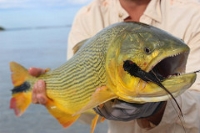
Fishing in Argentina is appealing to anglers of all types. Beginners to experts, spinners and fly-fishers are all like fish here: when they catch the Argentina bug, they're hooked. Argentina has a huge variety of fishing destinations. Patagonia offers the best fly-fishing. Lower and deeper rivers are best suited for spinning and trolling. The Atlantic coast makes for innumerable sea fishing destinations. Each region has different regulations and fishing seasons, but in general, the best time to visit is in summer.The Dorado, known for its fighting spirit and beautiful golden colour, is the country's most prized fish. Sharing the conquistadors' thirst for gold, fishermen are infatuated with its size and lustre. These beauties can be battled throughout the country's various terrains. Argentina's trout are equally versatile, and salmon were artificially introduced to the country for sport fishing and now thrive in its mountain streams.There are several lodges in the country geared exclusively for fishing holidays, providing great fishing spots, accommodation, food, and fishing guides as part of one package. Two well-known lodges that provide these kinds of trips are Hambare Lodge and Rio Manse Lodge.
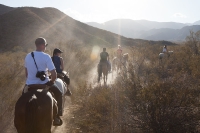
In a country where a game on horseback ( pato) is the national sport, and cowboys ( gauchos)still ranch the land, going horse riding is a must for visitors wanting to get a feel for the beautiful landscapes, culture and traditions. Horse riding has played a major role in Argentina's history, economy and folklore, making it an ideal method of exploring the country. Estancios, or ranches, across Argentina provide visitors with the opportunity to experience life in the Argentinean countryside.Embark on a horseback ride across the mountains, woods, beaches and streams of Argentina, an activity for all ages and abilities. There are guided rides across this beautiful country's diverse terrain and most guides will give riders a brief theory lesson before departure. Compliant criollo horses, saddled in comfortable long-haul tack, are generally used for these excursions.Riding in north Argentina's Iguazú region, along paths only accessible on horseback, visitors can enjoy the sounds and sights of the rainforest. The Mendoza Province, at the foot of the Andes, is another great horse-riding destination. Here, beautiful San Isidro is one of the favourites, as are the cisterns ( aljibes)of the Huarpe settlements and the Laguna del Diamante Lake. At the Boquerón Hacienda in Tierra del Fuego, travellers can enjoy an authentic Argentine ranching experience.
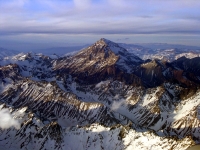
Argentina is a favoured destination for serious mountain climbers, most intent on conquering one of the highest peaks in the world, Aconcagua, west of Mendoza. Other challenging climbs in the country include the Fitzroy Range in Parque Nacional Los Glaciares in Santa Cruz province, and the Sierra de la Fentana. The Lakes Region of Argentina, near Bariloche, is also popular for climbing, particularly at the ski resort Cerro Catedral. Mount Tronador is of particular interest in the Bariloche area, as is Piedro Parada, a beautiful desert crag located close to the Chubut River.Argentina's official climbing season runs from 15 November to 15 March. Aconcagua can be climbed safely only by well-equipped teams who are in excellent physical shape, experienced, and led by expert guides. The various routes up the mountain offer all kinds of technical climbing challenges on rock, ice and snow. Most other climbing regions in Argentina insist on climbers taking officially qualified guides along for the climb. There are many local companies that organise climbing trips, providing guides, lodging, meals and drinks, necessary transportation, camping gear, climbing equipment, park and hut permits, and porters, all included in the total cost. Climbers need only bring their boots and personal hiking gear.
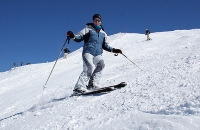
Skiing in Argentina offers visitors a unique thrill, and the eastern slopes of the Andes in particular are becoming increasingly popular with those seeking an exhilarating skiing trip. Ski season in Argentina runs from June to September, with July and August bringing the most crowds to the resorts along with almost certain fresh snowfalls. Snow conditions vary from year to year, but there is usually excellent powder snow covering the slopes.Las Leñas, which once hosted the World Cup, is the most prestigious of the resorts for downhill skiing, while Los Penitentes near Mendoza boasts some of the best compact powder snow. The oldest resort, Bariloche, offers good après ski and beautiful views of the Nahuel Huapi region, while Chapelco is a snowboarder's paradise. Visitors can also enjoy the breathtaking views from Mount Castor out across the South Atlantic near Ushuaia, which offers fantastic cross-country skiing.
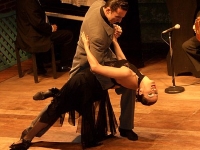
Tango emerged from a set of social conditions in Buenos Aires in the 1800s. In those early days, it spoke of the hardship, pain and loneliness of the European immigrants who had left their families and loved ones behind in search of a better life. This seemed elusive for the majority of the male immigrant population who lived mainly on the shores of the Riachuelo and in the impoverished neighbourhoods of southern Buenos Aires. Tango lyrics arose from the mournful love songs and melancholic moments of these times, and with it a dance that expressed much of these sentiments. Men danced with men, and then prostitutes gradually provided the female quota, and so the dance evolved.The Argentine upper classes distanced themselves from the dance because of its associations, and it was only after World War II that things changed. Its transformation in the eyes of the elite came about with its celebration on the dance floors of the Parisian ballrooms. Buenos Aires thus gave birth to a dance that has captured the popular imagination of fellow dancers around the world. It is the ultimate experience for any tango lover to watch the passion, lust, beauty and melancholy of the dance being performed on the streets and in the tango halls of the city of its inception.
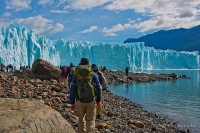
Argentina, with its infinite variety of landscapes and geographic zones, provides plenty of opportunities for those who like to take on nature up close and on foot. Northern Argentina offers unique desert landscapes, lush subtropical rainforest and of course, the thunderous Iguazu Falls, on the border with Brazil. To the south, trekkers are greeted with the awe-inspiring scenery of Patagonia and Tierra del Fuego. The Valdes Peninsula is also a popular location, providing visitors with the chance to see penguins, sea lions, whales and abundant birdlife. Some treks give visitors the opportunity to follow ancient Inca trails.Treks are often combined with cruises through colourful port towns, verdant fjords, and rugged, glacier-topped mountains. A particularly good trekking-and-cruise combination is one that covers the Beagle Channel, including a visit to the Cape Horn National Park. The natural beauty of Argentina offers some of the best trekking in the world and numerous tour operators organise expeditions throughout the country. For the most part, qualified guides are part of the package and operators are uneasy letting tourists trek on their own. Although almost all treks are planned and run during the summer months, there are some spectacular winter-time trails that allow you to see the country in a starkly beautiful state.
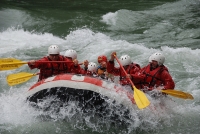
Argentina offers some wonderful white-water rafting opportunities, ranging in difficulty from Grade II through to IV, with exciting rides through magnificent scenery. One of the most popular routes is on the turbulent Rio Mendoza, cutting through mountain gorges, and on the Rio Manso through the southern part of the Parque Nacional Nahuel Huapi. The town of Esquel is also used as a base for rafters wishing to tackle Chile's renowned Rio Futaleufu, with its Grade V rapids. Numerous operators offer day trips.A good option for those looking for an exciting experience but who have no previous rafting experience is the Corcovado River, where the rapids never exceed level three difficulty and the scenery includes beautiful Lake Rosario, Lake Tiobal, Mount Centinela and the town of Corcovado. In the summer, when the waters of the river and lakes warm up considerably, it's possible to take dips in the rivers and lakes during rest stops. The Alumine River is one of the most popular options for rafting, with rapids ranging from Grade II to V, where the upper part of the river is more challenging and suited only for experienced rafters looking for a reasonable amount of adventure.

Travel Guide powered by Word Travels, copyright © 2023 Globe Media Ltd. By its very nature information in this travel guide is subject to change at short notice and travellers are urged to verify information on which they're relying with the relevant authorities. Neither Globe Media Ltd nor Travel Vogue can accept any responsibility for any loss or inconvenience to any person as a result of information contained above.